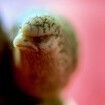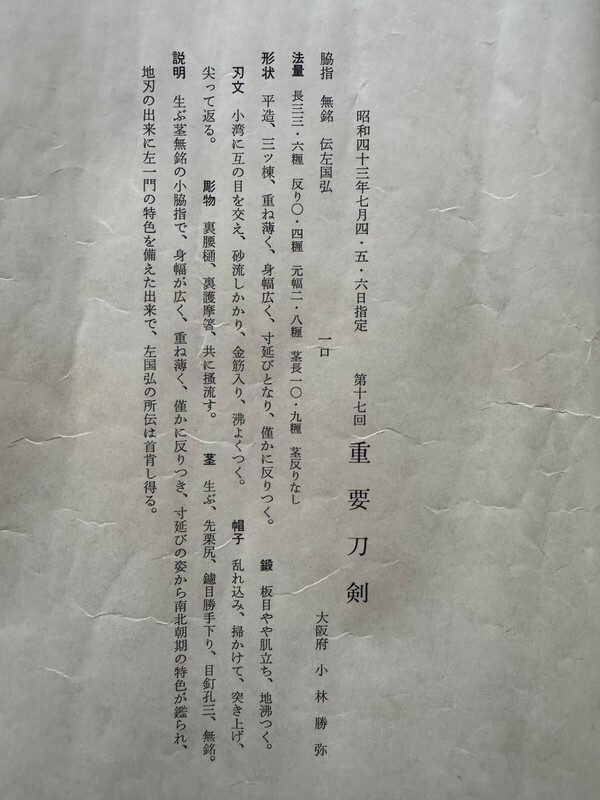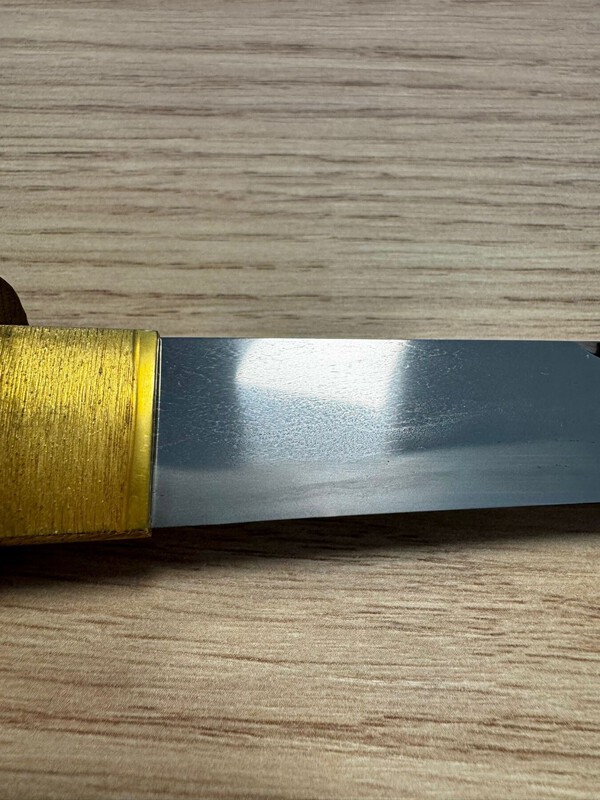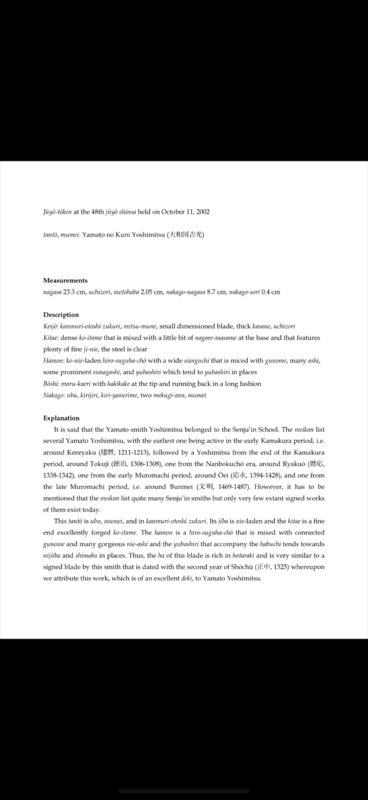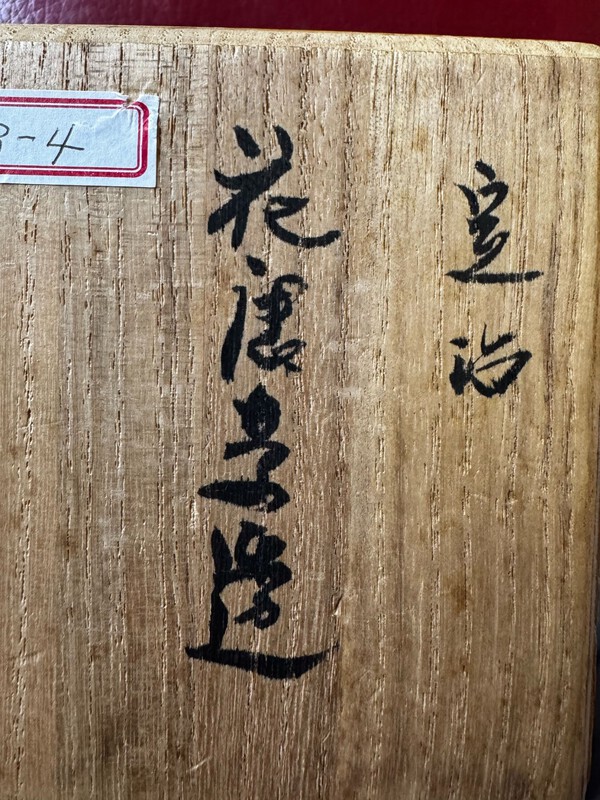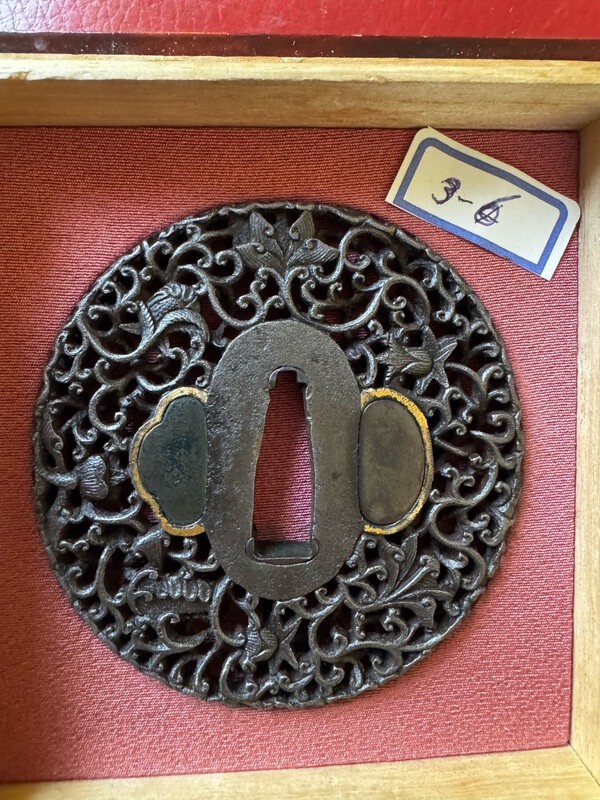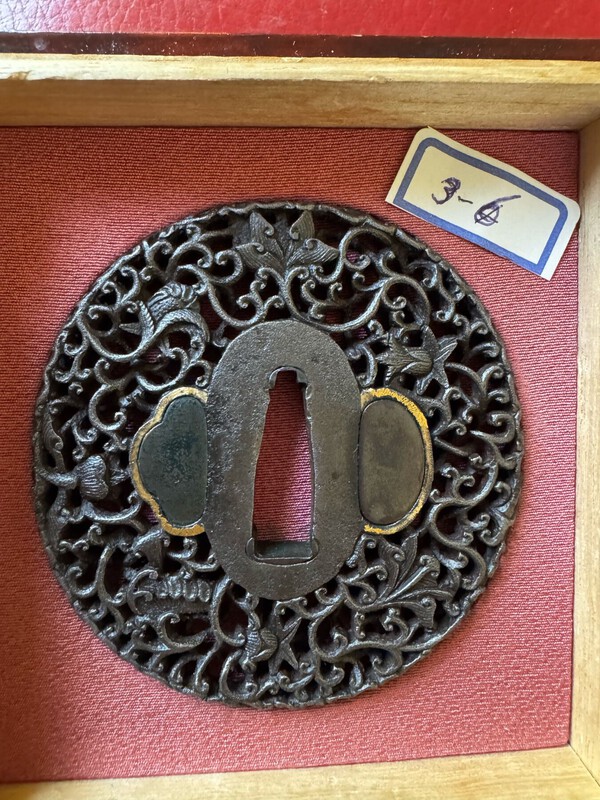-
Posts
85 -
Joined
-
Last visited
Content Type
Profiles
Forums
Events
Store
Downloads
Gallery
Everything posted by JAL
-
-
Dear Moriyama-san, Thank you very much as always, best regards John L.
-
Dear all, this Satō Kanzan sayagaki I find difficult to translate. Some parts are ok. It is of a Sa Kunihiro juyo blade. The backside is not from him but looks a strange text. Could anyone help? thanks John L.
-
Hi all, nr 33 the mumei kanmuri otoshi tanto is with me since almost 20 years. There is a Tanobe sayagaki on it which approximately reads: <Tanobe Sayagaki> 48th Juyo Token. Yamato(no)kuni Yoshimitsu Ubu-mumei, Kanmuri-otoshi-zukuri, Jiba wa Seichu 2 nenki no Doko no Yumei saku ni tsuyoku Hiketsu mono ari no soro. (Ji and Ha shows strong similarity to piece which has signed and dated 2nd year of Seichu/1326 Kamakura period) Deki Migoto nari, kono kou wa Senjuin-ha to tsutae, Kamakura jidai makki nari, ( The Quality is excellent, this smith is belong to Senjuin school, late Kamakura period.) Chinchin Chocho. (very rare and important) Hacho 7 sun 7bu arino Mizunoto-hitsuji reki, Shimo-tsuki,, Tanzan, Kanshi. (2003/Dec, Tanobe, examined and wrote.) I can post some photos of the tanto this weekend. best regards John Lapré
-
Thanks! best regards John
-
-
Yes, as is quite often the case.
-
Thank you! best regards, john
-
Dear all, i have trouble with this mei especially the 3rd kanji. First two maybe Unshū? thanks for any help, best regards John
-
Thanks all, Hozon papers are from end 2022 and I think it got papered with this repair. best regards John L
-
Looked artificial to me as well, but seemed melted droplets of metal and then polished. Most umegane I have seen were flat one color.
-
Dear all, a signed nidai Kashu Kanewaka (Matatsuke) wakizashi (Hozon) has this structure in the ji hada. Not looking like an umegane. Any ideas? best regards John L.
-
Moriyama-san got me the translation🙏 定治- Sadaharu 定治-Sadaharu 花唐草透 - Flower arabesque openwork best regards John L.
-
Thank you as always, Moriyama-san.
-
Dear all, I now was told this is a namban tsuba. Not high quality. I am curious about the nei and hakgaki. any help here? best regards John L.
-
Yes, I was informed off line as well that it is Namban iron.
-
Dear all, Not having a lot of a kodogu knowledge, this tsuba crossed my path when looking for a wakizashi sized tsuba for a simple mount. is this Shoami? Mimi are open work. Looks all iron. the signature and hakogaki on tge box do not give me a clue. any help would be appreciated. bedt regards John
-
Thank you all for your input. More for me to study I think😉. best regards John
-
-
Tachibana Soshi Inaba (Ito school?)


